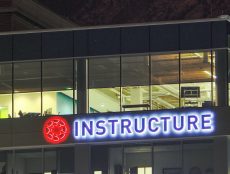
President Donald Trump’s nomination for Education Secretary, Betsy DeVos, has been a controversial topic throughout the political realm. When asked about her opinions on virtual charter schools, her response created a similar frenzy of confusion. She supports virtual charters, especially as an option for kids in rural areas with little access to public schooling.
While this virtual charter question took backstage to her other statements, several still criticized her declaration that virtual charters were the solution to rural school systems. In response, Edweek made a splash with their investigation that seemingly found significant problems in this sector of schooling.
What are these newfound criticisms of virtual charter schools, and are they entirely valid?
What Is A Virtual Charter School?
A virtual charter school is a publicly-funded school, which is often privately run and for-profit. They are exempt from many regulations that apply to traditional public schools. All or a portion of the instruction is provided through the Internet through virtual courses, e-mail, and online discussions.
What Are The Reluctances To Virtual Charters?
In Edweek’s investigative article, they reveal a Colorado virtual charter school named GOAL. One can invariably see problems with the GOAL system throughout the article, from money siphoning to conflicts of interest to simply stunting students’ growth. Is this always the case with virtual charter schools?
A major reluctance to virtual charters is the abysmal attendance rate. Although enrollment is high, attendance appears to be low. In Colorado, 45.8% of the enrolled students not using the learning software. However, the Center for Public Education found that only half of the districts monitor students’ activity or time spent online. Thus, it’s possible that this 48.5% is GOAL specific, as the nationwide data is not available.
Virtual schooling may stunt the education of students not naturally motivated. Virtual charter high school completion rates are at a low 25%, as found by a The Center for Public Education. These virtual schools appear to have higher dropout rates and lower test scores than the traditional brick-and-mortar schools.
Also, A virtual classroom setting cannot offer all classes. Thus, students lose out the traditional class experience. Finally, in response to Betsy DeVos’ statement about students in rural areas, many critics said that those who live in rural areas do not have access to the broadband necessary for virtual charter schools.

The Problems With These Claims
Removing GOAL’s issues and looking holistically, it seems that the reluctances appropriated to virtual charter schools are caused by human error as opposed to virtual learning error. This human error is also present throughout public schooling, outside of the virtual charter realm.
The attendance rate is certainly at a low and unprecedented rate with virtual charter schools, and we cannot ignore that number. However, it is not the inability of the virtual platform that causes the low attendance. There seems to be no accountability with parents, teachers, administrators, and the government to ensure these kids stay in school.
If we assume that those students not attending their online classes have dropped out, the Colorado 45.8% dropout rate is significantly higher than the 7.4% national dropout. However, the pool of students is also smaller for the Colorado rate. Over 1.2 million students drop out of traditional high school every year in the United States. Thus, it is not a problem with virtual charters alone—it is a problem of the entire school system. If virtual charters encourage the dropout rate, the Internet-based platform itself is likely not the cause. The reason is the current utilization of these platforms.
Solving These Claims
The method of solving these virtual problems is twofold: support and regulations. Students in online classes need teachers who are equally (if not more) engaged in their learning as classroom teachers. They need parents, guardians, guidance counselors, and administrators rooting for them, encouraging them, and disciplining them.
Students also need the government’s regulatory support. The government should institute practices that discipline inappropriate behavior from school owners and administrators. The school board should not be siphoning off money or lying about attendance rates, as found in the Colorado investigation. There must be monitoring systems in place. Employing and utilizing in-depth tracking tools—which are already available through many eLearning software—will keep school boards honest and students on the path to growth. But this is a solution not yet mandated.
Blended learning is another solution. Online platforms cannot offer all courses, such as art or gym. However, the most successful virtual charters, such as the South Carolina Virtual Charter School, blend online courses with academic and social outings and activities.
What Are The Positive Results of Virtual Charter Schools?
Although getting a bad reputation, virtual charter schools are the right solution for some students. Edweek’s investigation found that virtual charter schools are successful for 15% of students.
Students in rural areas, who want to learn but cannot easily get to school, benefit from the ability to have publicly-funded access to teachers and resources. Many motivated students learn faster online, without the worry of the pace of their fellow students. Similarly, those who struggle in school can take more time to go over material on their own with a virtual system.
Edweek wrote, “The problem is that such success stories are the exception, not the rule.” The argument, in contrast, is that the same is true for traditional classroom settings. Students in the classroom must also be motivated and disciplined in order to learn; otherwise, they tune out, act out, become frustrated with school, fail, or even drop out.
The difference between the classroom and the virtual classroom is the access to a support system. Those students involved in virtual charter schools in tandem with a strong support system show marked improvement in independence, self-discipline, and professional determination over their peers.
Conclusion
While virtual charter schools may not be the solution for everyone, traditional school systems are not a universal solution either. DeVos appears to be wrong in that rural areas are be the right target for virtual charter schools. However, blended learning could be a possible next step in the realm of charter eLearning. Blended learning environments incorporate rich online experiences with significant teacher and administration support and supervision. This works together to mitigate the criticisms of the current virtual schooling system.









[…] grades for four years. Where foreign languages, math skills, and technology know-how are considered core hard skills that make you technically qualified for a job, soft skills like being a team player and having good communication make you more likely to get […]
[…] fight the pervasive bogus image students have of science as a frighteningly complex, noncreative […]